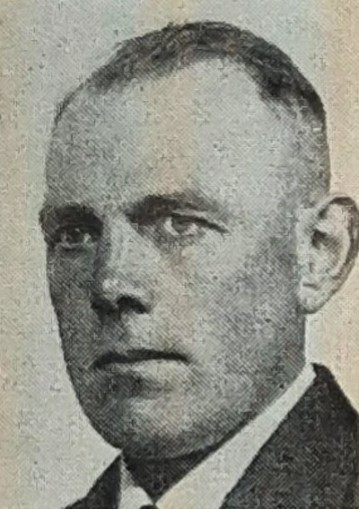Driegen, Jan
- Date of birth:
- September 18th, 1898 (Ambt-Vollenhove/Overijssel, the Netherlands)
- Date of death:
- April 12th, 1945 (Anloo/Drenthe, the Netherlands)
- Buried on:
- Dutch War Graves Zuiderbegraafplaats Assen
Plot: NO. Row: L. Grave: 14. - Nationality:
- Dutch
Biography
Jan Driegen lived in Nieuweschans at the Zuideinde 62A. He was born on September 18th, 1898 as son to backer Frederik Driegen (born Ambt-Vollenhove - passed away on May 15th, 1914 at the age of 41 in Assen) and Hendrikje Westerink (born in Ambt-Vollenhove - passed away on February 14th, 1962 at the age of 82 in Assen). He married Wilhelmine Katharina Dorothea Wiering (February 24th, 1901, Hechthausen, Germany - April 27th, 1986, Raalte) on December 11th, 1924 in Assen. He wored as a taxes officer. During the Second World War he was a member of the resistance, was local commander of the Ordedienst (OD) and was part of the Binnenlandse Strijdkrachten (Internal Forces).
On Tuesday 20 February 1945, Cornelis Gerrit Wiegers, adjutant with the military police in Finsterwolde, cycles home with his 21-year-old daughter Fia van Winschoten. That day is his son Gerrit's thirteenth birthday. A happy day for the family, so he suggests buying bantam chickens for birthday boy Job. Daughter Fia works at the Diaconessenziekenhuis in Groningen and has taken a day off. On the way, Wiegers notices unusual activity from the Germans. He observes everything with a keen eye and is determined to report it to the underground later. But it doesn't get that far.
Father and daughter have just hung up their coats when a car pulls up in front of their door at six o'clock in the evening. Four men, SD officers in plain clothes, knock on the door. One of them is probably Klaas Coenraad van de Hof, an SD officer from the very beginning in Winschoten. He hunts down the resistance in Oldambt like a man possessed. He is quoted as saying: "Didn't the Führer write that terror must be answered with terror? Why shouldn't we do that!"
The Sicherheitsdienst orders Wiegers to hand over his service pistol. "Mien, they're coming to get me!" is the only thing Wiegers can say to his wife Harmina when he has to go outside.
He sees two men in the car and recognizes them. They are two Schanskers, customs chief Jan Driegen and blacksmith Hendrik Frans Dresselhuis, men from his resistance group Marx. The sturdy Wiegers has to sit between them. All three are first taken to the House of Detention in Winschoten and later to Groningen. Someone else from the group breaks down during interrogation and that's how the SD discovers the organization. Ernst Kleinwort of the Wasserschutzpolizei, who knows Wiegers qualitate qua, tries to put in a good word for him. In vain. He is told not to do that again, otherwise his life is in danger.
Streets in their hometowns are named after the three resistance heroes of the Marx group. A poor tribute. Because under their names is no mention of who they were, how courageous their fight was and how pointless their sacrifice.
In the early Sunday morning of 8 April 1945, the three are executed in the Drenthe forests. Wiegers (50) and Driegen (46) in Anloo, Dresselhuis (43) in Norg. Shortly afterwards, on 13 April, North Drenthe is liberated.
Do you have more information about this person? Inform us!
Sources
- Photo 1: J.Niemeijer "Hoe Groningen streed".
- - Jan Driegen | Oorlogsgravenstichting
- Jan Driegen (Ambt Vollenhove, 18 september 1898 - Anloo (dr)/in het Annerbos, 8 april 1945) - Netwerk Oorlogsbronnen
- Jan Driegen | Erelijst van Gevallenen 1940-1945
- Agenten in oorlogstijd › De verhalen van Groningen
- Registratie Jan Driegen op 18 september 1898 » Open Archieven


